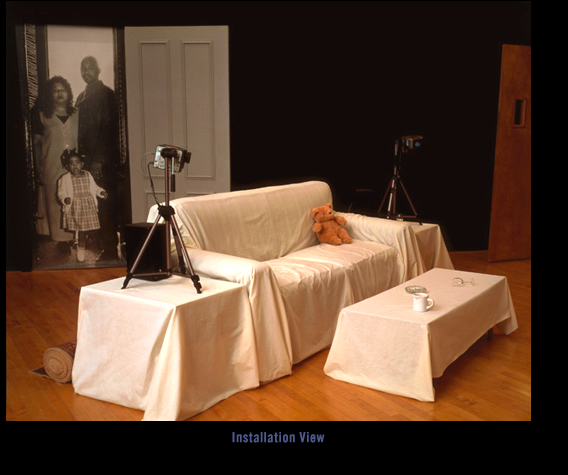







In Poland and Russia, Jews fled their homes, moving toward the West and the illusory promise of safety; local people looted the houses or just moved in. Germans took over the homes of Jews expelled to unknown places in Nazi Germany. Throughout the former East Bloc, people moved into the houses vacated by the Germans expelled when the war ended. Israelis took over Palestinian homes in Jaffa and Acre, Jerusalem and Hebron. The houses are emptied and become filled again. Sometimes the furnishings stay the same, sometimes all remnants of the former owners are burned including the food left on the table when flight became necessary.
Houses and their furnishings are anthropomorphic—imbued with the personalities of people; they serve as symbols for their human occupiers. They represent roots and identity. Houses might speak a history of the human tragedy replayed over and over in their hallways and rooms. Can they feel anything for the ones who left, do they retain their memory?
When I read an article in the New York Times about the Croats expelled from Bosnia who were taking over the houses abandoned by the exiled Serbs of Croatia, I thought the situation was a horrifying way of realizing the enormity of what occurs when people suffer from massive displacements. The appropriation of properties of those who have been exiled by those who were exiled, the wholesale moving into the abandoned homes and furnishings still warm from the breath of the chased and expelled, is chilling.
Chant for the Unsettled deals with the appropriation of property and belongings from those who have been displaced for political reasons. The work doesn’t focus on any particular area or ethnic group but is global in nature. The work looks on displacement as a mirror of the 20th century.
Installation Description
Furnishings are placed in the gallery as though it is someone's living room: a sofa, arm chairs, a coffee table, smaller occasional tables, a rolled up rug appears behind the sofa. All the furnishing are covered by ghostly shrouds, the white sheets used by people when they leave their houses for any length of time.
Over twenty people who have suffered through political appropriation of their homes were interviewed. Some of them have gone back to see their houses or to reclaim them, some have never have been able to return. There are two soundtracks in the space culled from comments made by the interviewees regarding the circumstances surrounding their exile. The first soundtrack is ambient and deals with people’s comments regarding the experience of being forced to leave their homes. This is mixed with an archetypal traveling sound, a sample blending the sound of planes with that of trains, all in a low hum; and a repetitious listing of all the
countries in the world.
Videos are projected onto two of the shrouded chairs. People sit in the chairs doing the daily activities that might normally occur in that space: carrying on conversations, reading books, sipping coffee, applying makeup, smoking a cigarette. Each person sits for a while, then dissolves into another person. The people are of different ages and ethnic groups. The video is shot and processed to create a ghostly image to suggest that the people who are there are temporal. Viewers can sit on the sofa and watch the people in the chairs across from them. There they can hear another audio track also culled from the interviews. This blending of voices consists of people relating what they miss about their homes, what they took with them, what they left behind and if they ever dream about the homes they lost. A voiceover queries: who sat here, who ate here, who lived here, who died here, who left here? This is repeated as a litany throughout the soundtrack.
The final elements are three doors placed on the walls. As the viewer opens each door, a family appears as a life-size photo — people who may have been forced out of the house, or may be moving in.
1996